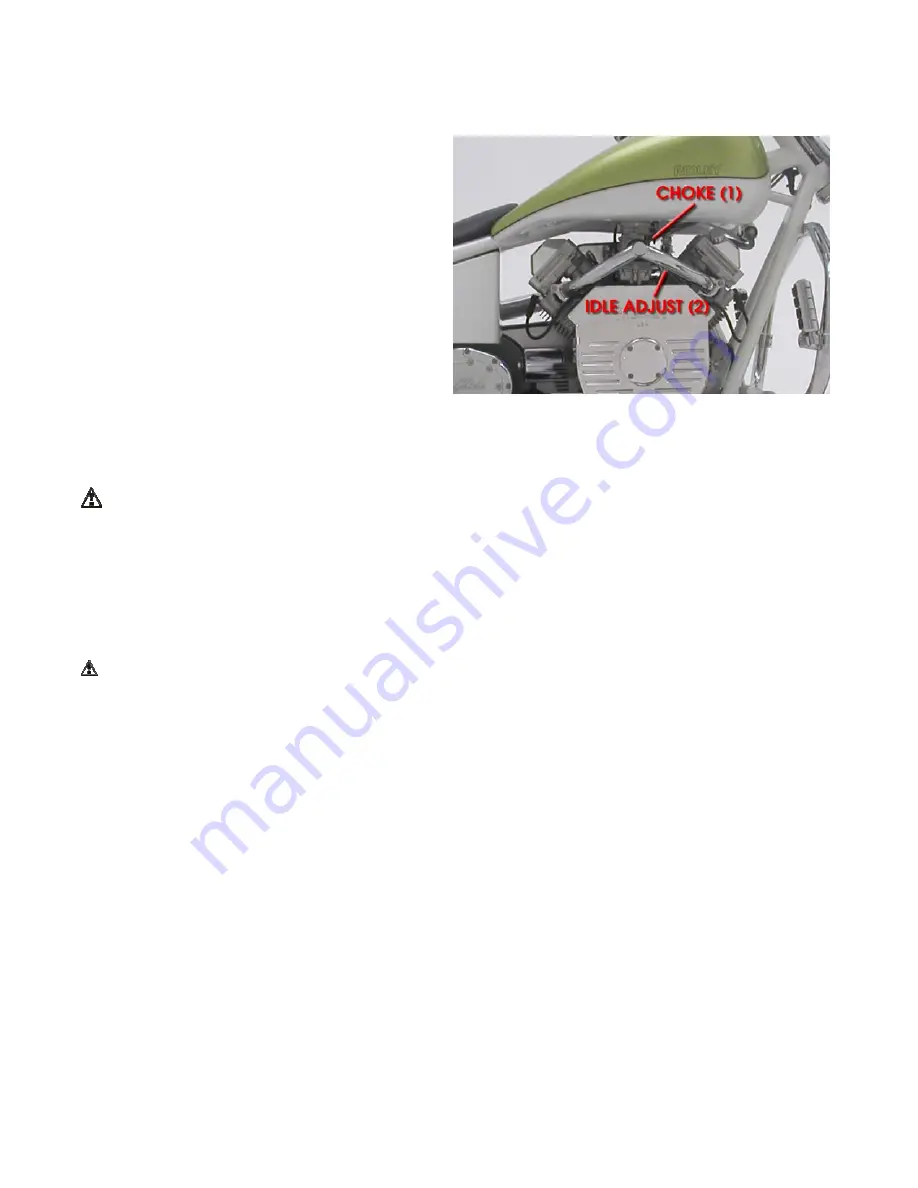
30
Engine
Check the engine’s idle while warm regularly. An idle set too high can cause harm to the rider, passengers and
motorcycle.
Choke (1)
Before starting the engine, while cold, pull choke
lever out and start engine. Leave choke lever out
for several minutes and allow engine to warm
before riding. Once engine is warm, push choke
lever in and ride.
Engine Idle (2)
Before each ride, the operator should inspect the
engine idle speed. After the engine has reached
operating temperature the idle should be around 600-
700 rpm. If the idle is incorrect, the motorcycle should
be taken to a Ridley Dealer.
The idle may be adjusted by the idle screw located on the carburetor. Turn clock-wise to speed the idle up or turn
counter clock-wise to slow engine idle down.
If idle is set too high, your motorcycle will be put into gear causing the motorcycle to roll forward and cause the
transmission belt to wear out.
Throttle
Make sure the throttle grip operates properly and check the free-play. The grip should return when released. If the
throttle does not rotate smoothly to the idle position, the motorcycle should be taken to a Ridley dealer to be
adjusted.
WARNING
: A throttle that does not return freely presents a serious hazard. Do not ride a motorcycle with a
throttle that does not work properly. Doing so could lead to a serious crash.
Lights, Signals and Switches
Check the headlight, front position lights, turn signals, taillight, brake light and all the indicator lights to make sure
they are in working order.
Check the operation of the horn switch, start switch, engine stop switch and main switch.
Fittings and Fasteners
Always check the tightness of the chassis fittings and fasteners before each ride. Take the motorcycle to a Ridley
Dealer for correct tightening torque.
Tires
To ensure maximum performance, long service and safe operation, note the following:
Tire Air Pressure
•
Should be checked and adjusted before operating the bike.
•
Front 35 PSI (241 KPa)
•
Rear 35 PSI (241 KPa)
















































